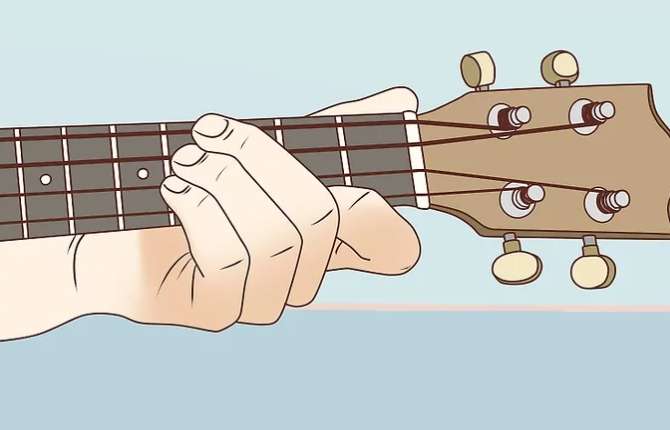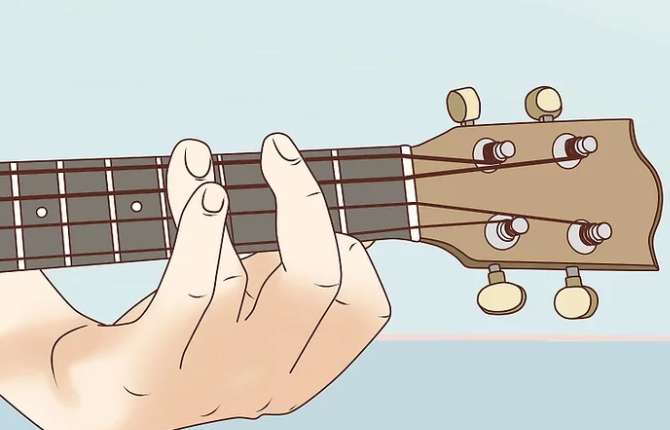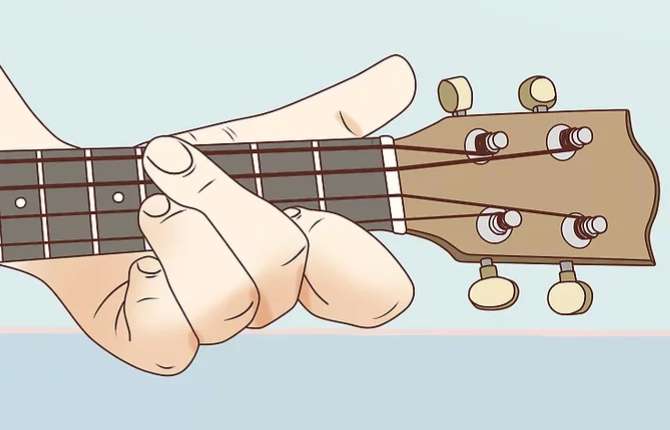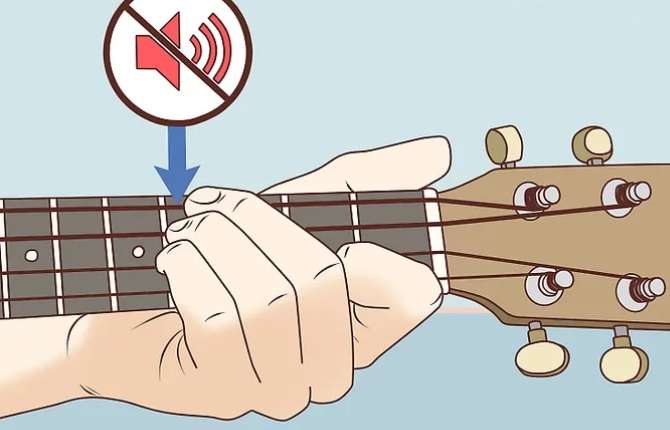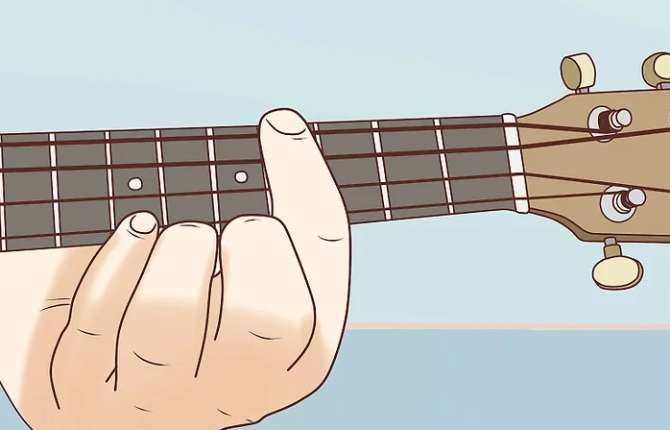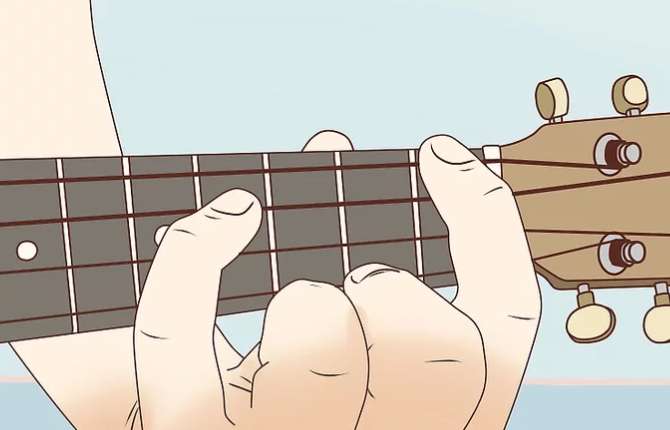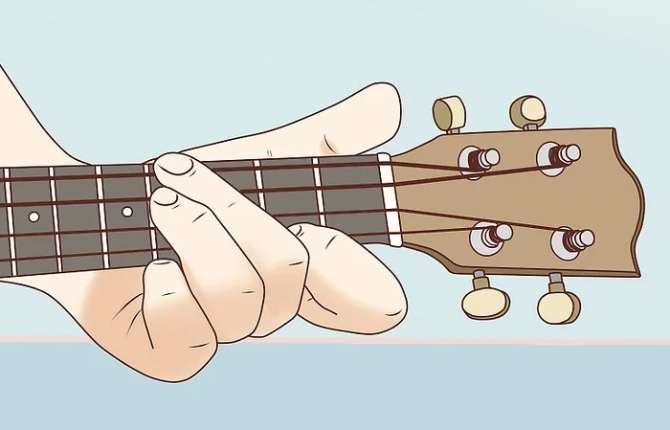
The E Ukulele Chord!
Learning how to play the ukulele is pretty simple, but a few chords might become somewhat challenging compared to others. Likewise, E ukulele chords can seem difficult to master, especially for newbies.
But still, it is applied as a common chord to many popular songs. In truth, different cord sizes have existed. So, you can attempt as long as you discover one shape that is easy for you.
Below, we are about to explain two methods of learning the E ukulele chord to make your efforts easier.
Method One: Playing the Standard E Ukulele Chord Shape
1. Try whether you can play conventional chord shapes
Before you begin to attempt options that might not play as cleanly, consider whether you might play the E chord conventionally.
It includes putting your little finger on the 4th fret of the E string, your ring finger on the 4th fret of the C string, your mid-finger on the 4th fret of the G string, your ring finger on the 4th fret of the C string, and your index finger on the 2nd fret of the A string.
- These chord shapes have many fingers stuck into a small space, which may cause many problems. This conventional chord shape might not be possible for you if you have big hands or fingers.
Tip: Ukulele chords are shown as text chords, with each number showing the number where those strings are fretted to create the chord. 4442 is the standard E-chord shape for text chords.
2. With one finger, barre the 4th fret strings
You may create the conventional chord shape as a partial barre chord if you are skilled with barre chords. Apply any finger, feels most comfortable to barre the G, C, and E strings. Utilize another finger on the 2nd fret of the A string.
- If you don’t have a bit of guitar-playing experience with barre chords on a guitar, this barre chord might become difficult.
- You could test by barring the strings with your thumb instead of one of your fingers. Anyway, playing the Strings clearly might become difficult while employing your thumb. It can make the transition to other chords difficult for using your thumb.
Disadvantage: You need to squeeze your finger or thumb at an odd corner to prevent the A string from being muted. Even if your fingers usually bend back in this way, it should not create trouble. Else, you might feel inconvenienced even though you naturally stay skilled at barre chords as you’re not fretting all the strings.
3. With your middle finger, attempt to play both the C and G strings
You could attempt fretting the C and G strings at the 4th fret with your mid-finger if you feel trouble getting three fingers on the C, E, and G strings. Next, with your ring finger, fret the E string at the 4th fret. Apply your index finger to fret a String at the 2nd fret.
- If your fingers don’t have enough strength to barre three strings, it could be an excellent alternative. Anyway, this method needs a bit of practice.
Method Two: Using Different E Major Uke Chord Shapes
1. Stay muted the G string to use the x442 method
This style becomes nearest to the standard E chord shape but utilizes fewer fingers. Put your little finger on the 4th fret of the E string, your ring finger on the 4th fret of the C string, and your index finger on the second fret of the A string.
- Technically, restrain yourself from playing the G string while playing this version of the E chord. It can be tough to avoid the G string while strumming in the case of beginners. You might get closer to it by muting the String with your mid-finger or thumb so that it can’t make a sound.
Tip: Only place your finger or thumb over the string to stay mute the string. To fret the String, never keep enough pressure.
2. If you stay skilled at barre chords, you could play the 4447 variant
As a text chord, this variant has appeared as 4447, but it’s not entirely correct. You close all the strings on the 4th fret for this variant — usually with your index finger or mid-finger. After that, place your little finger on the 7th fret of the A string.
- It might be the most effortless approach to playing the E ukulele chord if you’re good at barre chords. Anyway, transitioning between open chords can be difficult, especially when playing a song, bouncing between E and other chords.
3. Attempt the 1402 variation in the condition of having your flexible fingers
This variation will seem to be the same as the E7 cord but need a bit more efficiency. With your index finger, fret the G string on the first fret. Extend your little finger to fret the C string on the 4th fret. Then, fret the A string with your mid-finger on the 2nd fret, leaving the E string open.
- One of the most popular variations, but you require long, flexible fingers to drag it without muting the E string in this method. Fingering can also need some time to get right. So, it might require a bit of practice.
4. Apply the 4402 variations for a drone effect
For this variation, put your fingers just like a standard E chord, but keep the E string open. Now, fret the C string with your ring finger on the 4th fret, the G string with your mid-finger on the 4th fret, and the A string with your index finger on the 2nd fret.
- The droning effect brings the reality that you are performing two notes (B and E) with four strings. This variation does not function on all songs, but it could have an excellent effect on some.
Songs that Use the E Ukulele Chord
Hey, Soul Sister by Train is a known-classic pop song, sure to impress. It’s a song often given credit for the resurrection of the ukulele’s popularity in recent years.
You’ll be capable of learning how to play this song with the E ukulele chord. We believe you’ll wish to add it to your collection for its captivating tune.
Go to the Hey, Soul Sister Ukulele Chord
Conclusion – How to Play E Chord on Ukulele
We trust that we’ve distributed again. This lesson seems to be simple for everyone who desires to master this new chord, whether they are a newbie or a seasoned player.
Hopefully, you can master all the variants written in this guide so you can hold a big palette of chords to blend into your music.
One of the basic chords, so there is many songs sung using this E major chord. Mastering this chord will, of course, include more tunes to your repertoire, so learn it for your benefit.
Read also:
